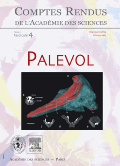
COMPTES RENDUS PALEVOL
Scope & Guideline
Where Past Meets Present in Earth Sciences
Introduction
Aims and Scopes
- Systematic Paleontology:
The journal publishes detailed systematic descriptions of fossils, exploring taxonomy and phylogenetic relationships across diverse groups, including mammals, reptiles, amphibians, and invertebrates. - Paleoecology and Biogeography:
Research often includes paleoecological studies that analyze the habitats and environmental conditions of past organisms, contributing to our understanding of biodiversity and distribution patterns through geological time. - Morphological and Functional Analysis:
A significant focus is placed on the morphology of fossil specimens, with studies examining functional adaptations and evolutionary trends within various taxa. - Methodological Innovations:
The journal also highlights innovative methodologies in paleontological research, including advanced imaging techniques, isotopic analysis, and taphonomic studies that enhance our understanding of fossil preservation and interpretation. - Interdisciplinary Approaches:
COMPTES RENDUS PALEVOL encourages interdisciplinary research, integrating paleontological data with archaeological, geological, and ecological perspectives to provide a broader context for findings.
Trending and Emerging
- Trace Fossils and Behavioral Paleontology:
There is a growing interest in trace fossils, particularly in understanding the behaviors of ancient organisms as evidenced by their burrowing and feeding activities. - Multidisciplinary Approaches:
Emerging themes include the integration of archaeological, genetic, and isotopic data to create comprehensive narratives of past ecosystems, showcasing the importance of interdisciplinary collaboration. - New Taxonomic Descriptions:
The journal has seen an uptick in new species and genus descriptions, particularly in previously underexplored regions, highlighting the ongoing discovery of biodiversity in the fossil record. - Technological Advances in Paleontology:
Advancements in imaging and analytical techniques are increasingly featured, allowing for deeper insights into fossil morphology and preservation, demonstrating the journal's commitment to methodological innovation. - Climate Change and Paleoecological Implications:
Research linking paleontological findings with climate change narratives is emerging, emphasizing the relevance of historical data in understanding current environmental challenges.
Declining or Waning
- Amphibian and Reptile Diversity Studies:
Recent years have seen fewer publications focusing specifically on amphibian and reptile diversity, perhaps indicating a shift towards more broadly applicable studies or a consolidation of findings in these areas. - Paleoanthropology:
Research related to human evolution and paleoanthropology has decreased, suggesting that the journal may be prioritizing more general paleontological studies over narrowly focused anthropological research. - Taphonomic Studies:
While still relevant, taphonomic studies appear less frequently, possibly due to a growing emphasis on integrative methodologies that combine taphonomy with other paleontological aspects. - Late Cretaceous Faunal Studies:
The focus on Late Cretaceous faunal studies has waned, which may reflect a saturation of findings or a shift towards earlier geological periods and their associated biodiversity.
Similar Journals

REVISTA BRASILEIRA DE PALEONTOLOGIA
Advancing Knowledge of Biodiversity and Extinction EventsREVISTA BRASILEIRA DE PALEONTOLOGIA (ISSN: 1519-7530, E-ISSN: 2236-1715) is a premier academic journal dedicated to the field of paleontology, published by the esteemed SOCIEDADE BRASILEIRA DE PALEONTOLOGIA. Operating under a Q3 quartile ranking in the 2023 Scopus statistics for Paleontology, this journal serves as a vital platform for researchers, professionals, and students to disseminate and engage with cutting-edge discoveries and methodologies in paleontological studies. With a broad scope that encompasses various aspects of Earth's historical life, REVISTA BRASILEIRA DE PALEONTOLOGIA provides an essential resource for the scientific community, particularly those based in Brazil and South America. The journal is committed to promoting rigorous research and fostering collaboration among scholars, ultimately contributing to advancements in the understanding of past biodiversity and extinction events. Its thoughtful curation of articles since 2010 ensures that it remains at the forefront of paleontological scholarship, despite its limited HIndex and open access options. This journal is a crucial asset for anyone looking to deepen their understanding of evolutionary processes that have shaped our planet.

RIVISTA ITALIANA DI PALEONTOLOGIA E STRATIGRAFIA
Pioneering Research in Paleontology and StratigraphyRIVISTA ITALIANA DI PALEONTOLOGIA E STRATIGRAFIA, published by Università degli Studi di Milano, is a leading open access journal dedicated to the fields of Paleontology, Geology, and Stratigraphy. Established in 1979, this prestigious journal fosters the dissemination of high-quality research and innovative studies within these disciplines, holding a commendable Q2 ranking in Geology, Paleontology, and Stratigraphy as of 2023. The journal’s commitment to accessibility since 2016 underlines its objective to promote the sharing of knowledge among researchers, professionals, and students alike. With its notable Scopus rankings reflecting a solid performance in the Earth and Planetary Sciences, particularly in Paleontology and Stratigraphy, RIVISTA ITALIANA serves as a vital resource for those seeking to stay informed on the latest advancements and discoveries within the geological sciences. For further inquiries, the editorial office is located at C/O RIVISTA ITALIANA PALEONTOLOGIA STRATIGRAFIA, VIA MANGIAGALLI, 34, 20133 MILANO, ITALY.
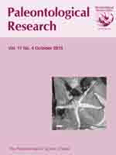
PALEONTOLOGICAL RESEARCH
Pioneering Research in the Evolution of Life.PALEONTOLOGICAL RESEARCH, published by the PALAEONTOLOGICAL SOCIETY OF JAPAN, is a prominent peer-reviewed journal that addresses key developments in the field of paleontology, ecology, and evolutionary biology. With an ISSN of 1342-8144, this journal has established itself as a vital resource for researchers and professionals who seek to explore the intricate history of life on Earth, integrating insights into evolutionary dynamics and ecological frameworks. Operating since 1997 and with content converging up to 2023, PALEONTOLOGICAL RESEARCH occupies a notable position, ranked in the second quartile within both Ecology, Evolution, Behavior and Systematics and Paleontology categories. While it is not an open-access journal, its rich repository of studies significantly contributes to the academic community. Researchers and students engaged in the exploration of ancient ecosystems and their implications for current biodiversity are sure to find valuable insights within its pages, reinforcing the journal's importance as a leading platform for disseminating paleontological knowledge in Japan and beyond.
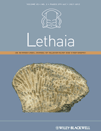
LETHAIA
Shaping the Future of Earth's Biological NarrativesLETHAIA, an esteemed journal published by Scandinavian University Press - Universitetsforlaget AS, serves as a vital platform for the dissemination of innovative research in the fields of paleontology as well as ecology, evolution, behavior, and systematics. Established in 1968 and continuing its impactful journey until 2024, LETHAIA has consistently contributed to advancing scientific understanding of Earth's biological and geological history. With a 2023 impact factor placing it in the Q2 category for both Paleontology and Ecology, Evolution, Behavior and Systematics, the journal is recognized for its high-quality, peer-reviewed articles that engage and challenge the academic community. Researchers, professionals, and students alike will find LETHAIA to be an indispensable resource for the latest findings, methodologies, and theoretical advancements in these interlinked disciplines.
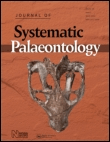
JOURNAL OF SYSTEMATIC PALAEONTOLOGY
Unveiling the Mysteries of Extinct LifeJOURNAL OF SYSTEMATIC PALAEONTOLOGY, published by Taylor & Francis Ltd in the United Kingdom, stands as a premier platform for advancing the discipline of palaeontology. With an ISSN of 1477-2019 and an E-ISSN of 1478-0941, this journal has achieved an impressive ranking of Q1 within its category for the 2023 Scopus metrics, underscoring its significance in the field. Currently ranked #10 out of 113 in Earth and Planetary Sciences – Paleontology with a remarkable 91st percentile, it serves as an essential resource for researchers, professionals, and students alike. The journal aims to publish cutting-edge research that fosters a deeper understanding of systematic palaeontology, including the evolutionary relationships and biodiversity of extinct organisms. While it operates under a traditional access model, the Journal’s expansive reach from its inception in 2003 through to 2024 ensures it continues to play a vital role in shaping the future of palaeontological studies.
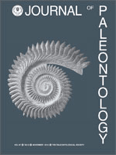
JOURNAL OF PALEONTOLOGY
Illuminating Evolutionary Journeys Through TimeJOURNAL OF PALEONTOLOGY, published by Cambridge University Press, is a leading scholarly journal dedicated to the field of paleontology, featuring a broad scope that covers fossil studies, evolutionary biology, and earth history. With an ISSN of 0022-3360 and an E-ISSN of 1937-2337, this esteemed journal serves as an essential platform for researchers, professionals, and students to disseminate cutting-edge research findings and insights in paleontological science. The journal holds a significant position within its category, ranking Q2 in the 2023 quartiles and achieving a Scopus rank of #51 out of 113 in Earth and Planetary Sciences – Paleontology, placing it in the 55th percentile of its field. Although it does not currently offer open access options, JOURNAL OF PALEONTOLOGY has been a critical contributor to advancing knowledge from its inception in 1979 through to 2024. Its dedication to rigorous research ensures it remains an indispensable resource for those vested in the understanding of ancient life and ecosystems.
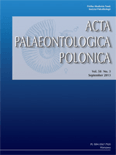
ACTA PALAEONTOLOGICA POLONICA
Advancing Knowledge in Paleontological SciencesACTA PALAEONTOLOGICA POLONICA is a leading scholarly journal in the field of paleontology, published by the Institute of Paleobiology, Polish Academy of Sciences. With its open access model established since 1956, the journal ensures that vital research related to Earth's history and the evolution of life is freely accessible to a global audience. Based in Warsaw, Poland, this journal has garnered a respectable impact within the academic community, currently positioned in the Q2 quartile of its field and ranking #47 out of 113 in Scopus for Earth and Planetary Sciences, reflecting its significance in advancing paleontological research. Covering a wide range of topics related to fossil studies and evolutionary biology, ACTA PALAEONTOLOGICA POLONICA serves as a crucial platform for researchers, professionals, and students alike, encouraging the dissemination of innovative ideas and discussions that contribute to our understanding of past life on Earth. As it continues to publish high-quality articles through to 2024 and beyond, this journal remains integral to the ongoing discourse in paleontological sciences.
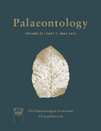
PALAEONTOLOGY
Illuminating Evolution Through the Lens of PaleontologyPALAEONTOLOGY, published by Wiley in the United Kingdom, is a leading journal dedicated to advancing the knowledge of Earth's biological history through the study of fossilized remains. With an ISSN of 0031-0239 and an E-ISSN of 1475-4983, this journal has established itself as a premier resource in the field, boasting a remarkable Q1 ranking in both Paleontology and Ecology, Evolution, Behavior and Systematics according to the 2023 category quartiles. Its commitment to high-quality research is evidenced by its Scopus rankings, placing it in the 93rd percentile among paleontology journals. While PALAEONTOLOGY is not currently open access, its extensive archival reach from 1979 to 2024 ensures that vital research findings remain accessible to the academic community. This journal not only acts as a platform for cutting-edge research but also fosters collaboration among scientists, students, and professionals interested in the implications of paleontological studies on contemporary ecological and evolutionary issues.
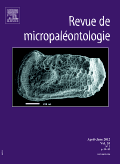
REVUE DE MICROPALEONTOLOGIE
Advancing Paleontological Knowledge, One Microfossil at a TimeREVUE DE MICROPALEONTOLOGIE is a prestigious academic journal published by Elsevier France - Éditions Scientifiques Médicales Elsevier, specializing in the dynamic field of Paleontology. Since its inception in 1979, the journal has established itself as a vital resource for researchers and professionals dedicated to the study of microfossils and their implications for understanding historical climate changes and biodiversity. With an impressive ranking of Q3 in the Paleontology category and a Scopus rank placing it in the mid-range of its peers, REVUE DE MICROPALEONTOLOGIE serves as an essential platform for disseminating cutting-edge research. While currently not open access, the journal ensures that its content is accessible to a wide audience through various library affiliations. By bridging the gap between theoretical research and practical applications, this journal contributes significantly to advancing knowledge in Earth and Planetary Sciences, making it a valuable tool for students and seasoned researchers alike.
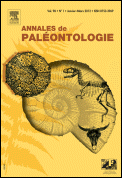
ANNALES DE PALEONTOLOGIE
Where Paleontological Excellence Meets Global CollaborationANNALES DE PALEONTOLOGIE is a distinguished academic journal published by MASSON EDITEUR that plays a pivotal role in the field of paleontology. With an ISSN of 0753-3969 and an E-ISSN of 1778-3666, this journal has been a vital resource since its inception in 1988, continuously contributing to the advancement of knowledge in Earth and Planetary Sciences, particularly focusing on paleontological research. Currently ranked #68 out of 113 in its category by Scopus, and celebrated for its Q2 quartile standing, ANNALES DE PALEONTOLOGIE publishes innovative studies, reviews, and discussions that appeal to a diverse audience of researchers, professionals, and students. The journal aims to foster a deeper understanding of paleontological phenomena and encourages interdisciplinary collaboration within the scientific community. Although it is not an open access journal, its commitment to scholarly excellence ensures that the content is highly regarded and widely referenced in academic circles. Situated in Issy-les-Moulineaux, France, it continues to maintain a global readership while promoting significant advancements in paleontological research.